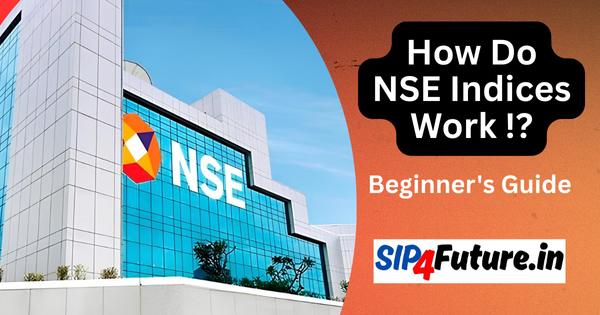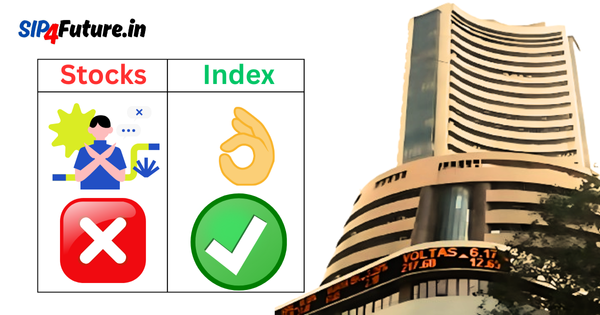Godrej Properties Ltd., a leading name in India’s real estate sector, released its Q4 financial results for FY25 on May 2, 2025, sparking discussions among investors and analysts. The company reported a robust 48.39% year-on-year revenue increase to ₹21.22 billion, driven by strong booking values, yet faced a 20.83% decline in net profit to ₹3.80 billion. Alongside these financials, Godrej Properties approved 24,829 new stock grants under its Employee Stock Grant Scheme, signaling confidence in long-term growth. This article dives into the details of these results, explores the factors influencing the company’s performance, and assesses its position in the broader market landscape.
How Did Godrej Properties Perform in Q4 FY25?
Revenue Surge Amid Strong Bookings
Godrej Properties reported a stellar 48.39% increase in revenue for Q4 FY25, reaching ₹21.22 billion compared to ₹1,426 crore in the same quarter last year. This growth was primarily fueled by a booking value of ₹29,400 crore, surpassing the company’s guidance of ₹27,000 crore. According to posts on X, this achievement underscores robust demand for Godrej’s residential projects across key markets like Mumbai, Delhi-NCR, and Bengaluru. The company’s focus on premium and luxury housing segments has resonated with buyers, capitalizing on India’s growing urban affluence.
However, the EBITDA margin contracted to 5.2% from 8.6% year-on-year, reflecting higher operational costs and project execution expenses. Despite the revenue boost, profitability took a hit, which we’ll explore further below.
Profit Decline Raises Concerns
The 20.83% drop in net profit to ₹3.80 billion, down from ₹417.3 crore quarter-on-quarter, has raised eyebrows. This decline can be attributed to increased costs, including raw material price hikes and labor expenses, which have pressured margins across the real estate sector. Additionally, the company faced challenges from regulatory delays in project approvals, which impacted timelines and profitability. A conference call with investors on May 2, 2025, at 4:30 PM IST, hosted by Godrej Properties, aimed to address these concerns and outline strategies for margin improvement.
Stock Grants and Employee Incentives
In a move to align employee interests with long-term growth, Godrej Properties approved 24,829 new stock grants under its Employee Stock Grant Scheme. These grants, with a nominal exercise price of ₹5 per option, vest over three years, incentivizing key talent retention. However, 2,726 previously issued grants lapsed, possibly due to employee turnover or unmet vesting conditions. This initiative reflects the company’s commitment to fostering a performance-driven culture, a strategy often seen in growth-oriented firms listed on the National Stock Exchange (NSE).
| Financial Metric | Q4 FY25 | Q4 FY24 | Change (% YoY) |
|---|---|---|---|
| Revenue (₹ billion) | 21.22 | 14.26 | +48.39% |
| Net Profit (₹ billion) | 3.80 | 4.80 | -20.83% |
| EBITDA (₹ billion) | 1.10 | 1.22 | -10% |
| EBITDA Margin (%) | 5.2 | 8.6 | -3.4% |
What Factors Influenced Godrej Properties’ Performance?
Real Estate Sector Dynamics
The Indian real estate sector has been a mixed bag in FY25, with residential demand soaring but commercial segments facing headwinds. Godrej Properties, primarily focused on residential projects, benefited from a post-pandemic housing boom, driven by low interest rates and government incentives like the Pradhan Mantri Awas Yojana (PMAY). However, rising construction costs and supply chain disruptions have squeezed margins, a challenge echoed by competitors like DLF and Oberoi Realty.
The company’s strong booking value reflects its strategic expansion into high-growth markets. For instance, projects in Mumbai’s western suburbs and Bengaluru’s tech corridors have seen robust pre-sales, aligning with urban migration trends. Yet, the profit dip highlights the need for cost optimization, a topic likely discussed in the investor call.
Government Policies and Their Impact
Government decisions have played a pivotal role in shaping Godrej Properties’ trajectory. The Real Estate (Regulation and Development) Act, 2016 (RERA), enforced by state governments, has streamlined project approvals but also increased compliance costs. In Q4 FY25, delays in RERA approvals in certain states reportedly impacted project launches, contributing to the profit decline. Conversely, tax incentives for affordable housing and infrastructure development under the Union Budget 2025 have bolstered demand for Godrej’s mid-segment projects.
Additionally, the Reserve Bank of India’s (RBI) decision to maintain repo rates at 6.5% in early 2025 has kept home loan rates stable, supporting buyer sentiment. However, potential rate hikes in response to global inflationary pressures could dampen demand, a risk Godrej Properties must navigate.
Global Market Scenario
Globally, real estate markets are grappling with inflation, rising interest rates, and geopolitical uncertainties. In the U.S., the Federal Reserve’s aggressive rate hikes have cooled housing demand, while China’s property sector faces a liquidity crisis. India, however, remains a bright spot, with foreign institutional investors (FIIs) pouring funds into real estate stocks, including Godrej Properties, due to its stable growth outlook.
On May 2, 2025, Godrej Properties’ stock closed at ₹2,194.50 on the NSE, up 1.53%, reflecting positive market sentiment despite the profit dip. This resilience can be attributed to India’s relatively insulated economy and the company’s strong brand equity. However, escalating tensions between India and Pakistan, as noted in market reports, could introduce volatility, impacting FII inflows.
When Will Godrej Properties Regain Momentum?
Short-Term Outlook
Analysts maintain a neutral view on Godrej Properties, citing the balance between strong revenue growth and profitability challenges. The company’s FY26 guidance of ₹32,500 crore in booking value, later revised to ₹40,000 crore in some X posts, signals ambitious expansion plans. Key projects in Hyderabad and Pune are expected to drive bookings, but margin recovery hinges on cost control and timely project execution.
The stock’s technical levels also provide insights. X posts highlight a support zone between ₹1,737 and ₹1,886 and a resistance at ₹2,533, suggesting potential for a breakout if Q4 momentum sustains. Investors are advised to monitor the stock’s 21-day EMA for low-risk entry points.
Long-Term Growth Drivers
Godrej Properties’ long-term prospects remain robust, driven by India’s urbanization and rising disposable incomes. The company’s land bank, spanning over 8,000 acres, positions it to capitalize on future demand. Additionally, its focus on sustainable development, with projects adhering to IGBC Green Building Standards, enhances its appeal to environmentally conscious buyers.
The approval of new stock grants underscores a forward-looking approach, ensuring talent retention amid competitive pressures. However, global economic headwinds, such as U.S.-China trade tensions or commodity price spikes, could pose risks. Investors should watch for updates on the company’s debt-raising plans, as the board is set to consider issuing debt securities via private placement.
| Market Factor | Impact on Godrej Properties | Source |
|---|---|---|
| RBI Repo Rate | Stable home loan rates boost demand | RBI |
| RERA Compliance | Higher costs but improved transparency | RERA |
| FII Inflows | Support stock price resilience | |
| Geopolitical Tensions | Potential volatility in FII flows |
How Does Godrej Properties Compare to Peers?
Competitive Landscape
Godrej Properties operates in a competitive market alongside players like DLF, Macrotech Developers (Lodha), and Prestige Estates. While DLF reported a 22% YoY profit increase in Q4 FY25, driven by luxury projects, Macrotech faced similar margin pressures as Godrej due to cost inflation. Godrej’s booking value of ₹29,400 crore outpaces many peers, reinforcing its market leadership in residential real estate.
Stock Performance
On the Bombay Stock Exchange (BSE), Godrej Properties’ stock has shown resilience, gaining 40% in FY25, outperforming the BSE Realty Index’s 32% rise. However, its price-to-earnings (P/E) ratio of 78x, compared to DLF’s 65x, suggests a premium valuation, which may deter value investors. Posts on X recommend a stop-loss at ₹2,100 for short-term traders, with a target of ₹2,500.
What Are the Future Targets for Godrej Properties?
Analyst Projections
Research institutes have set varied targets for Godrej Properties, reflecting optimism tempered by near-term challenges. Choice Equity Broking projects a target of ₹3,504, implying a 68% upside from the current price of ₹2,194.50, driven by strong booking growth. ICICI Securities recommends Godrej Properties futures for short-term gains, citing potential short covering. However, Motilal Oswal advises caution, suggesting a target of ₹2,800, factoring in margin pressures.
| Research Institute | Target Price (₹) | Upside (%) | Timeframe |
|---|---|---|---|
| Choice Equity Broking | 3,504 | 68% | 12 months |
| ICICI Securities | 2,900 | 32% | 6 months |
| Motilal Oswal | 2,800 | 27% | 9 months |
Historical Returns
Godrej Properties has delivered strong returns over the years, with a 5-year CAGR of 22% and a 10-year CAGR of 18%. In FY25, the stock gained 40%, outperforming the Nifty 50’s 24% rise. However, its 1-year return of 28% lags behind DLF’s 35%, reflecting competitive pressures.
Conclusion
Godrej Properties’ Q4 FY25 results paint a picture of resilience and ambition, with a 48.39% revenue surge offset by a 20.83% profit decline. The company’s strong booking value, strategic stock grants, and expansive land bank position it for long-term growth, but near-term challenges like cost inflation and regulatory delays require careful navigation. Supported by favorable government policies and India’s urban growth, Godrej Properties remains a key player in the real estate sector. Investors should weigh the stock’s premium valuation against its growth potential, keeping an eye on global and domestic market trends.
Disclaimer: This article is provided for educational purposes only and does not constitute financial advice. Investing in stocks involves risks, and past performance is not indicative of future results. Consult a certified financial advisor before making investment decisions. Data sourced from public platforms like NSE, BSE, and is subject to change, and readers should verify information independently.




